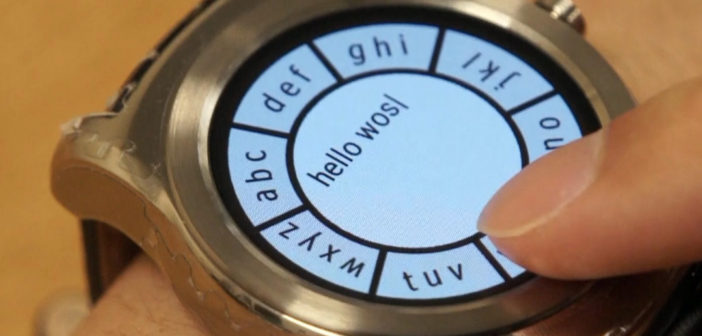St Andrews University researchers create twist, and pan techniques
A new system for making smartwatches and fitness trackers easier to use could transform the technology for users without the need to buy new hardware, according to research from the University of St Andrews, Scotland, UK.
WatchMI allows wearers to access functions on their watch using a wider range of actions, for example by twisting the watch face, applying pressure to the screen, or by panning the watch to the right or left.
Currently the small size of the face of a smartwatch makes the touch input interface limited.
However, for the first time, a computer scientist team at St Andrews has created a new interface using the inbuilt sensors contained in most smartwatches (accelerometer and gyroscope), meaning the new technology can be easily applied to existing watches.
The new methods make it quicker and easier to carry out a variety of functions, for example: to turn up the volume by twisting the watch face; scroll between menus by panning left or right; or even play games by twisting the face to move a character and tapping with another finger to fire a weapon.
Texting could also be made easier for smartwatch wearers by using pressure to select characters rather than multiple taps, claimed the university.
Hui-Shyong Yeo, postgraduate researcher in the School of Computer Science at the University, who led the project, said: “I believe this could transform the way smartwatches are viewed and used because our technique could be applied to most of the smartwatches and fitness trackers in the market without adding to the cost.”
Professor Aaron Quigley, Chair of Human Computer Interaction at the School of Computer Science at the University, added: “Direct input with our smartphones or smartwatches allows many forms of interaction, however with small diminutive devices our fingers and hands get in the way, blocking our view of what is happening. WatchMI overcomes this problem and allows us to wear and interact with all the pixels on our body-worn devices, not just the ones our fingers aren’t blocking.”
Other examples of the new interface include being able to twist the watch face to change the time on the alarm clock, or using pan and twist to scroll across maps and to zoom in.
The system was created with the help of researchers from Korea Advanced Institute of Science (KAIST).





